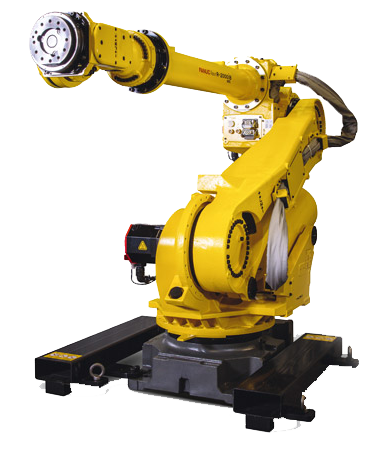Industrial automation has been essential for improving and expanding manufacturing processes. Automation turns manual labor manufacturing into controlled systems capable of automatically executing tasks with the use of computers, industrial robots, and other machinery. Below is a list of some of the key benefits of automation.
Increases Productivity
Implementing an automation system can drastically increase productivity. The need for higher productivity rates is often one of the main reasons manufacturers turn to automation. Robotic systems in particular can boost throughput with their fast-operating speeds and twenty-four-hour operation. Take for instance a robotic part transfer application. When done manually one or two parts may be moved by a worker every few minutes. However, automating this process with a FANUC M10ia can allow for the transfer of up to one hundred parts per minute. This not only improves the part transferring process but other aspects of the production line as more parts are able to move through manufacturing in less time. In addition, productivity rates become consistent as delays stemming from worker breaks, errors, and distractions are eliminated.Improves Cycle Times
In manufacturing it is important to keep cycle times to a minimum. The more time it takes to manufacture products, the more costs there will be. Automation systems can reduce cycle times with their reliable, fast, and accurate operation. Automating manufacturing processes expands their capabilities, allowing raw materials to be converted into finished goods in less time than manual operations. Articulated robots are programmed to automatically move from part to part without delay. Their consistent operation allows for products to be completed in less time. The precise and accurate operation of robots means products are manufactured without errors, which also has a positive impact on cycle times in applications like robotic assembly.Reduces Costs
Since industrial automation involves the use of automatic machines and equipment, human intervention is dramatically reduced if not eliminated. This significantly reduces operational costs such as labor. Another benefit of automation equipment is that it does not require a salary, benefits, or paid time off. In addition, utility costs can be reduced since these systems do not need a climate-controlled work environment and many can operate in dime lighting. Material costs can also be reduced with automation systems since they are highly reliable and accurate. Material waste is cut down through the reductions of manufacturing errors by automating with a FANUC R2000ib/165F. All of these decreased costs help manufacturers to grow their bottom lines.Improves Product Quality
With the need for human interaction reduced or eliminated, human error becomes obsolete. Automation systems are designed to be reliable and accurate. Parts manufactured through welding automation are consistent, uniform, and well-built. Manufacturing outcomes are controlled through the programming of these systems. This ensures equipment such as CNC machines or a FANUC Arcmate 100ic follow exact application paths and parameters resulting in high quality products.Increases Worker Safety
Industrial manufacturing often involves dangerous, dirty, or dull tasks that can be hazardous to the health and safety of workers. Automating such tasks eliminates risks and increases worker safety. Six axis robots are the most common type of automation implemented for hazardous work. Robots are durable and capable of handling harsh work environments. The FANUC M710ic/50 is especially designed for operating in tough conditions.Robots Done Right is the place to start when it comes to used robots. Contact us if you are interested in buying or selling a factory robot.

